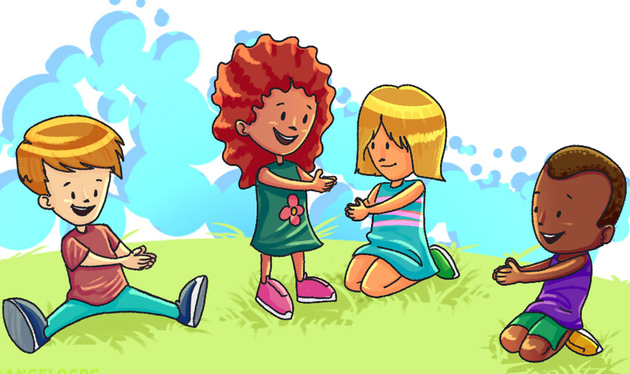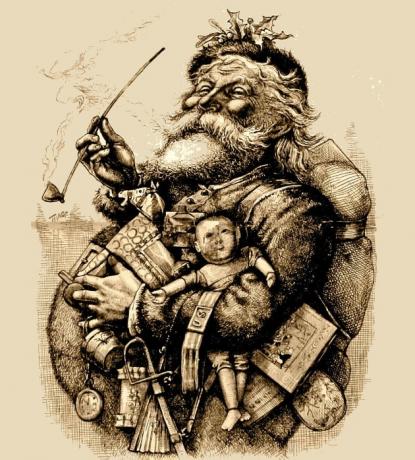At folk games bring together several traditional and popular games.
They are widely used in early childhood education, as in addition to having fun, they work with cognition, coordination, creativity, concentration and develop children's social interaction.
These games are passed from generation to generation and usually do not have a defined author. Therefore, they may undergo some changes, either in name or in rules, depending on the region of the country.
Remember that folklore brings together various expressions of popular character, such as legends, songs, songs, dances, beliefs, festivals, proverbs, riddles, anecdotes, parlendas, etc.
traditional toys

Traditional toys are objects that involve (or not) a popular game, for example:
- marbles: colored glass balls used in group games, where one ball is thrown above the other (of the competitor).
- kites (parrot): produced from a wooden stick (or bamboo) and colored tissue paper, kites are made to perform acrobatic maneuvers in the sky.
- Top: It is usually made of wood and has a metallic tip. With a rope wrapped around the top, the person throws the object, which performs several twirls.
- slingshot: objects made of fork-shaped branches and rubber bands. They are used to shoot stones or any small object such as grain.
- figurines: small thematic letters in which children collect and exchange between them. There are some albums intended for collage. The stickers can be used in a popular game of "sticking figurines". In this case, they are gathered together in a pile, the person knocks and the cards they turn over are theirs.
Popular Games
Popular games are traditional games that can be played individually or in groups.
Hopscotch

Played in a group, a sequence of one and then two blocks is drawn on the ground. Ten squares are made and each one has a number (1 to 10).
With a stone, for example, each player must hit the square of numbers in sequences and jump (with one and two feet) each court, until reaching the end.
The player cannot step on the number that is on the stone, nor on the lines of the squares. Thus, whoever can reach all the numbers and jump without stepping outside or on the court where the stone is thrown, wins.
catch-up

In a group, one person is chosen to be the catcher for others. As soon as the hand touches others, the person is out of the game. The goal is to tap all players.
There are several versions of this popular game. One of them is when the grabber touches a person, that person changes his position and starts to catch the others.
Hide and seek

Group play where one person is in charge of counting (usually up to 10) and eyes closed, until the others hide.
The place where the person performed the count is used to immunize others, which is called the "peak". Therefore, in some places this game is also known as hide and seek.
If the last player manages to hit the peak and say the phrase "saved the world", all players who were caught are saved. Thereafter, the same person must perform the count again.
Jump rope

Activity performed individually or in groups. When more people are involved, two of them swing and twirl the rope, so that one can jump.
If the jumper steps on the rope, it's another player's turn. This activity can also involve popular songs, sung by people swinging the rope.
Pass Ring

Group activity, where one is chosen to pass the ring through the hands of other children. In a row, all participants stand with their hands clasped together and cupped.
Thus, the passer discreetly leaves the ring in the hand of some player and, finally, chooses another player to guess who got the ring. If it doesn't get it right, it starts again with the one who got the ring.
See too: Wheel games
Tug of war

A game formed by two groups. A rope is used and a boundary drawn on the ground. When starting, each group pulls the rope, until the opponents pass the marked line. So the strongest group wins the game.
Cat-Mia

Like the blind snake, the mia-cat is a type of game that involves a group of people. The difference is that when the blindfolded person touches another person, that person makes a meowing sound.
Through the sound, the blindfolded person must guess who it is. If she guesses, the game passes to the person touched. Otherwise it starts over. This game can also be played in a dark place.
Blind goat

Played in a group, one person is chosen and their eyes are blindfolded. Without seeing the other participants, she tries to find them.
If she manages to touch one of them, she gets rid of the blindfold and passes it to the person who got caught. Note that in some places it is called a blind snake.
Strength

Game performed in groups and aims to guess a word. The person who chooses the word can give some hint about the characteristics, for example, is it a fruit, a place, an object, etc.
Each one indicates a letter and if the word does not have that letter, little by little a body is drawn in a “supposed” gallows.
Players can guess the word throughout the game. If it's not guessed and the whole body is drawn, they lose.
Folklore Quiz
To learn more about our rich folklore, read these texts we have prepared especially for you:
- what is folklore
- Indigenous games to amuse children
- Source of popular expressions you need to know
- dodgeball game



